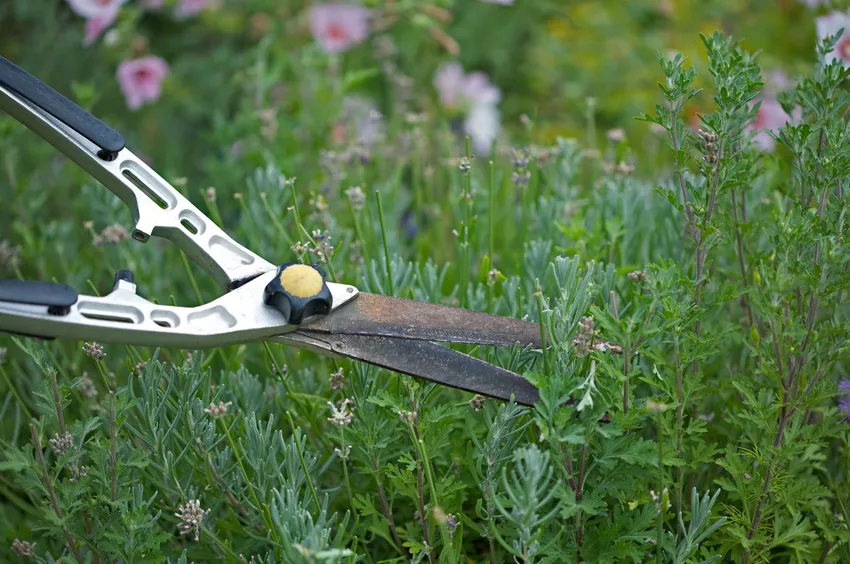Lavender can be found in almost every garden, but it does not bloom splendidly everywhere. Proper pruning is one way to bloom.

True lavender (Lavandula angustifolia) is an absolute classic in the garden. But it doesn't always want to bloom as lavishly and magnificently as its owner would like. This is often due to a bad cut or no cut at all, because there are many mistakes that can be made when cutting. The pruning of the lavender should prevent the plant from becoming too woody in the lower part and only developing a few long shoots with few leaves and flowers.
Regular pruning keeps lavender in good shape and promotes plant he alth. In addition, a rich branching counteracts the bareness of older lavender bushes. We list for you what you should consider when shortening the popular purple mint (Lamiaceae).
When do you prune lavender?
Ideally, lavender is cut twice a year: once in spring and once in summer. When cutting lavender in the spring, timing is key. Pruning too early while the lavender is still experiencing severe frosts can cause serious damage to the plant. Therefore, the first cut is best done before sprouting at the end of March or beginning of April. You should make the second cut in the summer just before the flowers fade, i.e. in July or August. This allows for a second flowering phase in the fall.

Should you also prune lavender in autumn?
An autumn pruning, as is usual for most shrubs, is not recommended for lavender. Because if it is cut too late, the lavender no longer has enough strength for budding and the winter, so that the cutting points could quickly lead to serious frost damage. In this case, there will be no flowering and, in the worst case, winter hardiness will be significantly reduced. The lavender could thus wake up from hibernation next year with clearly marked marks.
How to cut lavenderright?
When cutting the lavender, you should never cut too deeply. Depending on the growth and growth phase, the cut should also vary in strength. In spring, it is best to cut back about one to two thirds of the lavender just before it starts to sprout. After it has faded in summer, you can cut it back halfway. Basically, young lavender plants should be cut back more than older ones. You can cut the shoots by up to half to promote compact growth.
You should be particularly careful with older lavender bushes. First remove all withered inflorescences. Then cut rather cautiously and not too deep (about 10 cm) in a bushy shape. The lavender can only sprout with great difficulty or not at all from branches that are too woody and close to the ground.

Pruning too high, on the other hand, does not harm the plant, but it does not contribute to quality care either. Without regular pruning, lavender can become very woody under optimal growth conditions. If it has not been pruned for a few years, it is therefore advisable to rejuvenate the lavender in small steps over several years so that the plant is not damaged.
How to cut lavender correctly?
- Pruning twice a year
- Spring cut in March to April: One third to two thirds
- Summer pruning in July or August: One third to half
- Young plants can be pruned harder than older ones
- Do not cut into overly woody plant parts
You can find more about the correct care of lavender here in our special article.
Cutting lavender to dry
The fragrant lavender flowers can be harvested and used to make various products. Tea, scented sachets and lavender oil are just a few well-known examples. The flowering branch tips are used for this. For the harvest, the whole lavender bush is cut back at the right time (mid-July). It is best to cut the stems about 10 cm below the base of the flower. You can then tie small bouquets and hang them upside down in a dry, airy place to dry.
In our special article we explain in detail how best to dry lavender.